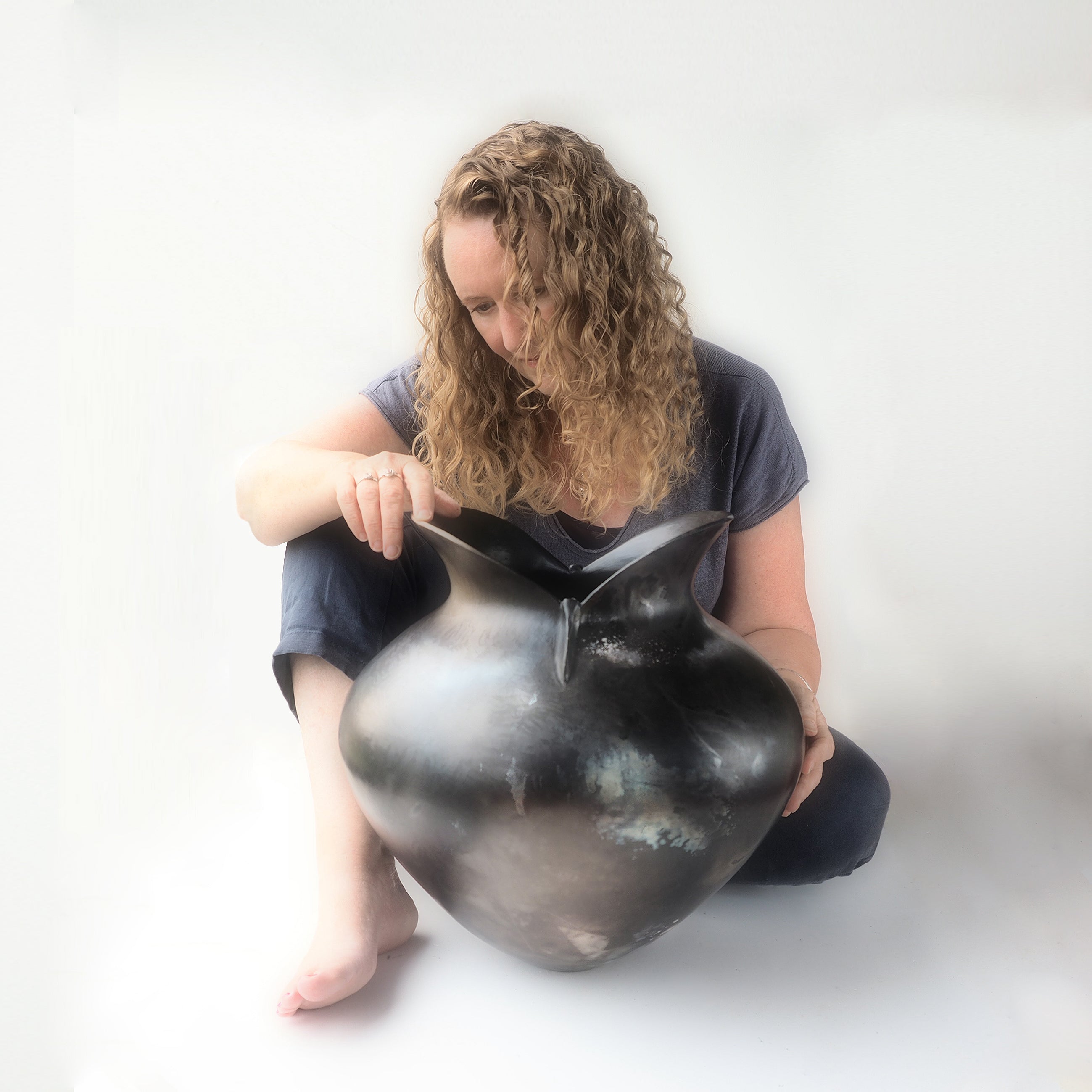Catalogue
Add description, images, menus and links to your mega menu
A column with no settings can be used as a spacer
Link to your collections, sales and even external links
Add up to five columns
Add description, images, menus and links to your mega menu
A column with no settings can be used as a spacer
Link to your collections, sales and even external links
Add up to five columns

Bridget Johnson 'Tension & Contrast' exhibition
April 24, 2019 3 min read
Gosh well it makes sense to start our new blog with a fresh face so I'm thrilled to share with you ceramicist, Bridget Johnson, and her journey so far...

Evolution of Bridget:
Nearly ten years ago, with no expectations and seemingly nothing to lose, I joined a local pottery class just for fun. Immediately I became addicted to working with clay.
I attended every class the tutor Kathie was willing to run, and was told by Kathie ‘you have to take this further, I’m signing you up for a degree in ceramics’. From that point on, I’m not quite sure what happened – I found myself in what was to me then a brave new world of study, research, assignments and a passion for experimentation and design.
Over the course of my four years of study I explored slab work, wall art, monoprinting, all manner of glazes and finishes, and every ceramic texture from fine white porcelain, to coarse black clay.
Influenced by the work of Magdalene Odundo, I found my niche when I discovered the West African tradition of hand building, and I fell in love with this technique. Since then, I have been seeking to create work that explores beautiful and organic forms that are crafted with precision, yet seem formed by nature, and through the elements of earth and fire, I strive to achieve a sense of primitive perfection within a hand crafted vessel.

The Process…
My vessels are formed using a traditional West African coiling technique, a building method which for me has an almost addictive and Zen-like quality, where I feel completely at one with the clay.
This particular technique, where each new coil is twisted into the body of the vessel, produces a greater strength to the form, and the use of a highly grogged clay body adds to this a resilience, helping the vessel withstand the primitive firing technique.
The vessels are then refined by scraping and surforming to develop the form and smooth the exterior clay surface, which is then followed by hours, sometimes days, of burnishing using a polished stone, which produces a tactile sheen, making each piece feel warm and alive.
The pieces are bisque fired, and then smoke fired with a carefully selected collection of organic materials such as sawdust, wood shavings, coffee grounds, dried leaves and flowers, to produce the surface markings.
The intensity and precision involved in making and burnishing each form is then contrasted by the excitement and drama of smoke firing, where the vessels are sacrificed to the smoke and flames, and alchemy takes over…
The result is that each piece is unique, feels alive, and has its own attitude and identity.

History info re process:
Historically, these pots would have had their one and only firing in a bonfire, an unpredictable process with rapid changes in temperature. Pots that didn’t make it through the firing process in one piece were ground up and added to fresh clay to give it greater resilience.
Burnishing was used to improve a pot’s ability to hold liquid, as it compacts the clay’s surface.
It is fascinating that these ancient clay processes which had very practical reasons behind them, were, and are still, used for decorative and aesthetic purpose.

Tension & Contrast
I have always been interested in the tension and contrast between what is natural and what is man-made, and seek to create organic forms that seem to have sprung up naturally and yet are made with great attention to detail. This tension is expressed in the smoke firing process. For someone who enjoys the precision of coil building, and finishing each detail of their pieces so carefully, it is incredibly exciting, unpredictable, not to say stressful and nerve-wracking to then hand my vessels over to the natural elements of the smoke and fire to create its markings. The smoke fired finish makes each piece unique and creates a sense of life and drama on the vessels’ surface.
My vessels are abstract forms that have a suggestion of an organic form about them. They are experiments in form, and the markings and effects they take on in the smoke firing help to attract the observer who can then give the form their own suggestions and ideas.


Subscribe
Sign up to get the latest on sales, new releases and more …




